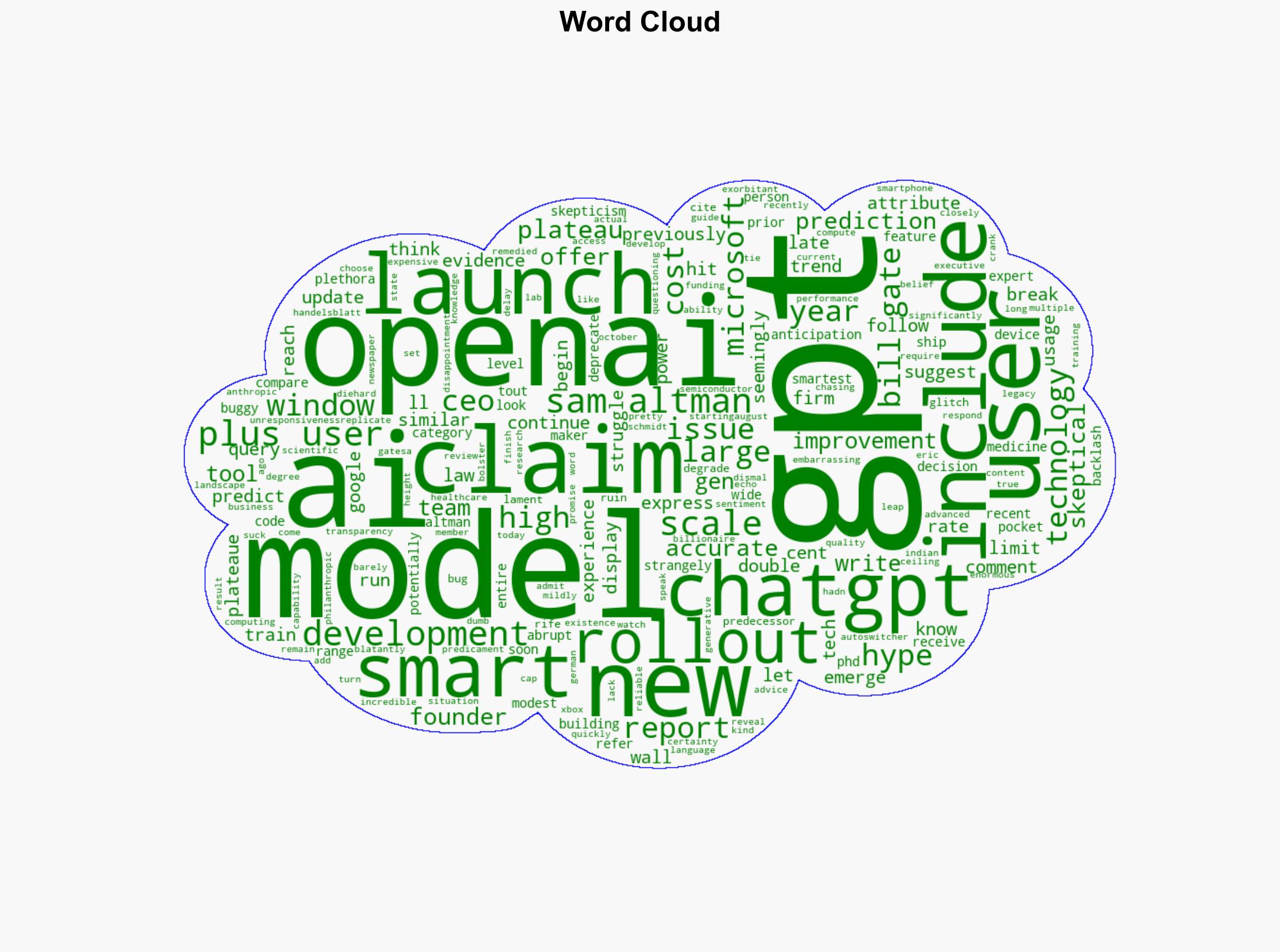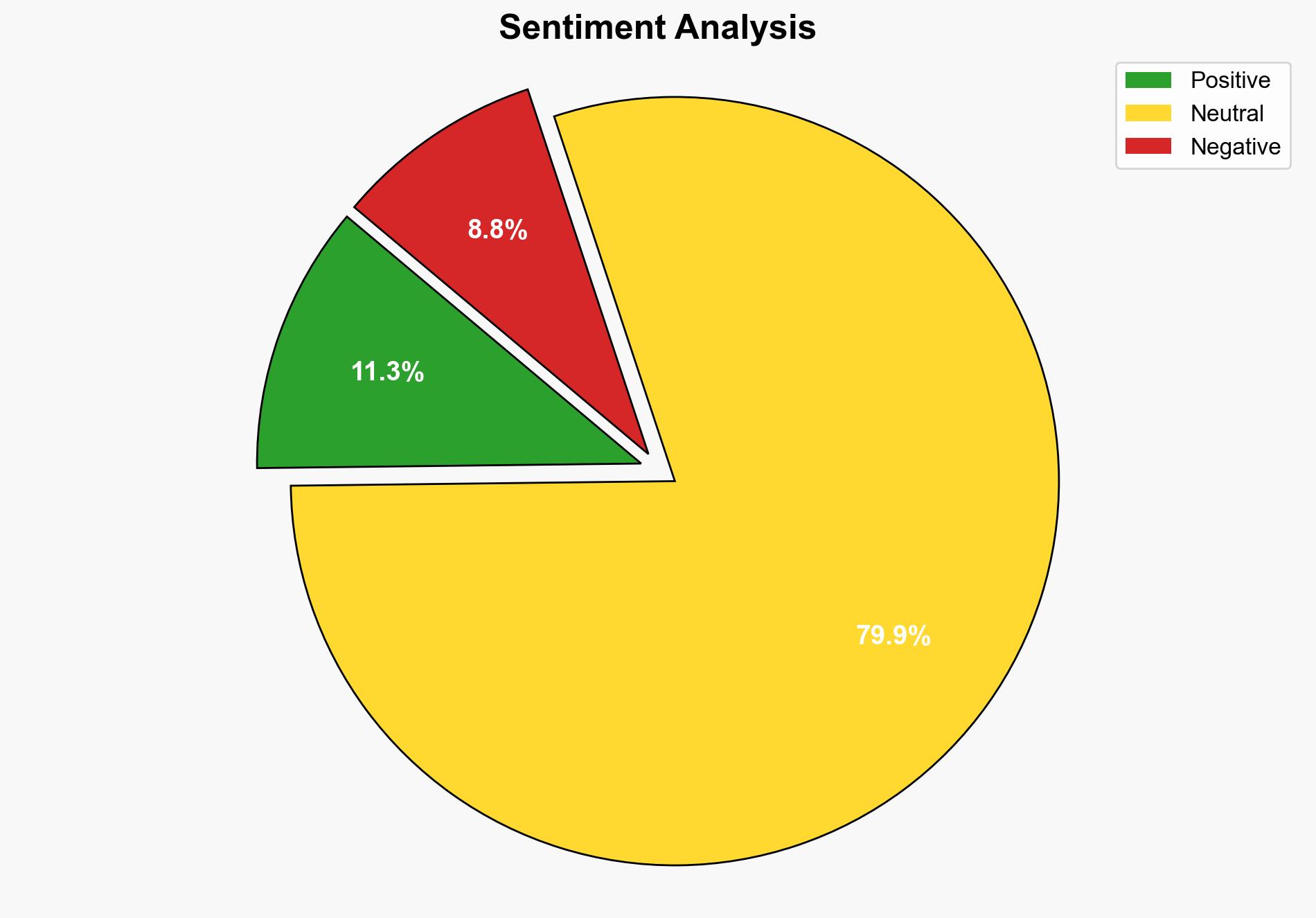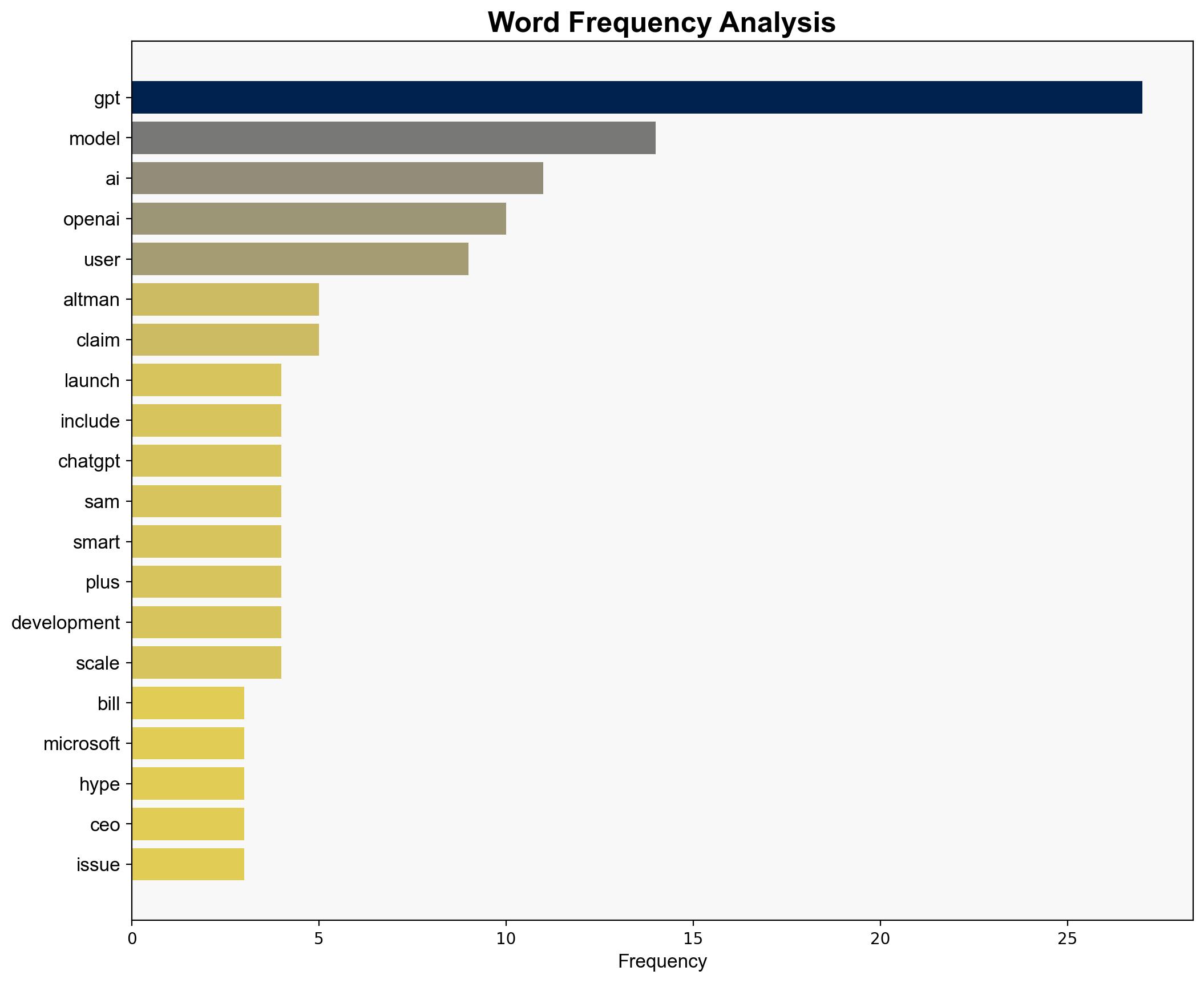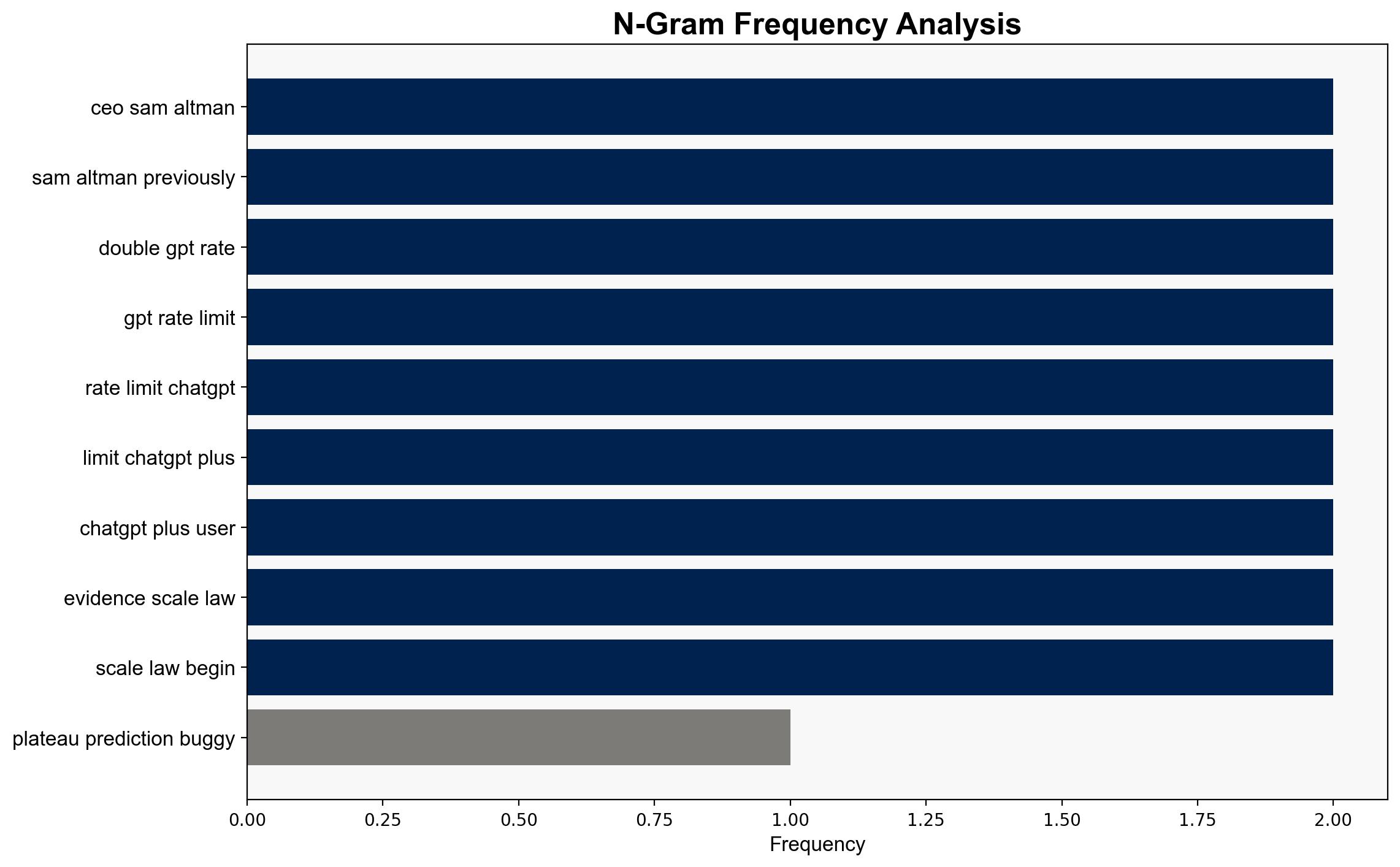From plateau predictions to buggy rollouts Bill Gates GPT-5 skepticism looks strangely accurate – Windows Central
Published on: 2025-08-16
Intelligence Report: From plateau predictions to buggy rollouts Bill Gates GPT-5 skepticism looks strangely accurate – Windows Central
1. BLUF (Bottom Line Up Front)
The analysis supports the hypothesis that GPT-5’s performance issues stem from both technological limitations and strategic mismanagement. Confidence level: Moderate. Recommended action: Encourage OpenAI to enhance transparency and user feedback mechanisms, while investing in scalable infrastructure to address technical shortcomings.
2. Competing Hypotheses
1. **Technological Plateau Hypothesis**: GPT-5’s performance issues are due to reaching a technological plateau, as predicted by Bill Gates. This suggests inherent limitations in the current AI model architecture and training data quality.
2. **Strategic Mismanagement Hypothesis**: The issues are primarily due to strategic mismanagement, including premature rollout decisions and inadequate user communication, rather than technological limitations.
Using ACH 2.0, the Technological Plateau Hypothesis is better supported by Gates’ predictions and the reported high costs and challenges in advancing AI models. However, the Strategic Mismanagement Hypothesis is supported by user feedback and OpenAI’s reactive measures to address rollout issues.
3. Key Assumptions and Red Flags
– **Assumptions**: The Technological Plateau Hypothesis assumes that AI development is inherently limited by current technology and data. The Strategic Mismanagement Hypothesis assumes that better management could have mitigated the rollout issues.
– **Red Flags**: Lack of transparency from OpenAI on specific technological challenges. Potential bias in user feedback due to high expectations.
– **Missing Data**: Detailed technical reports on GPT-5’s architecture and training data quality.
4. Implications and Strategic Risks
– **Economic**: Continued performance issues could erode trust in AI solutions, impacting investment and adoption rates.
– **Cyber**: Vulnerabilities in AI models could be exploited if not addressed promptly.
– **Geopolitical**: Global AI leadership could shift if competitors overcome similar challenges more effectively.
– **Psychological**: User dissatisfaction may lead to reduced engagement and trust in AI advancements.
5. Recommendations and Outlook
- **Mitigation**: OpenAI should prioritize transparency and user engagement to rebuild trust. Implement robust testing and feedback loops before future rollouts.
- **Opportunities**: Invest in research to overcome technological barriers, potentially collaborating with other tech leaders.
- **Projections**:
– **Best Case**: OpenAI addresses issues, leading to improved model performance and user satisfaction.
– **Worst Case**: Continued issues lead to significant loss of market share and trust.
– **Most Likely**: Incremental improvements restore some user confidence, but challenges persist.
6. Key Individuals and Entities
– Bill Gates
– Sam Altman
– OpenAI
– Microsoft
– Google
7. Thematic Tags
national security threats, cybersecurity, AI development, technological innovation





